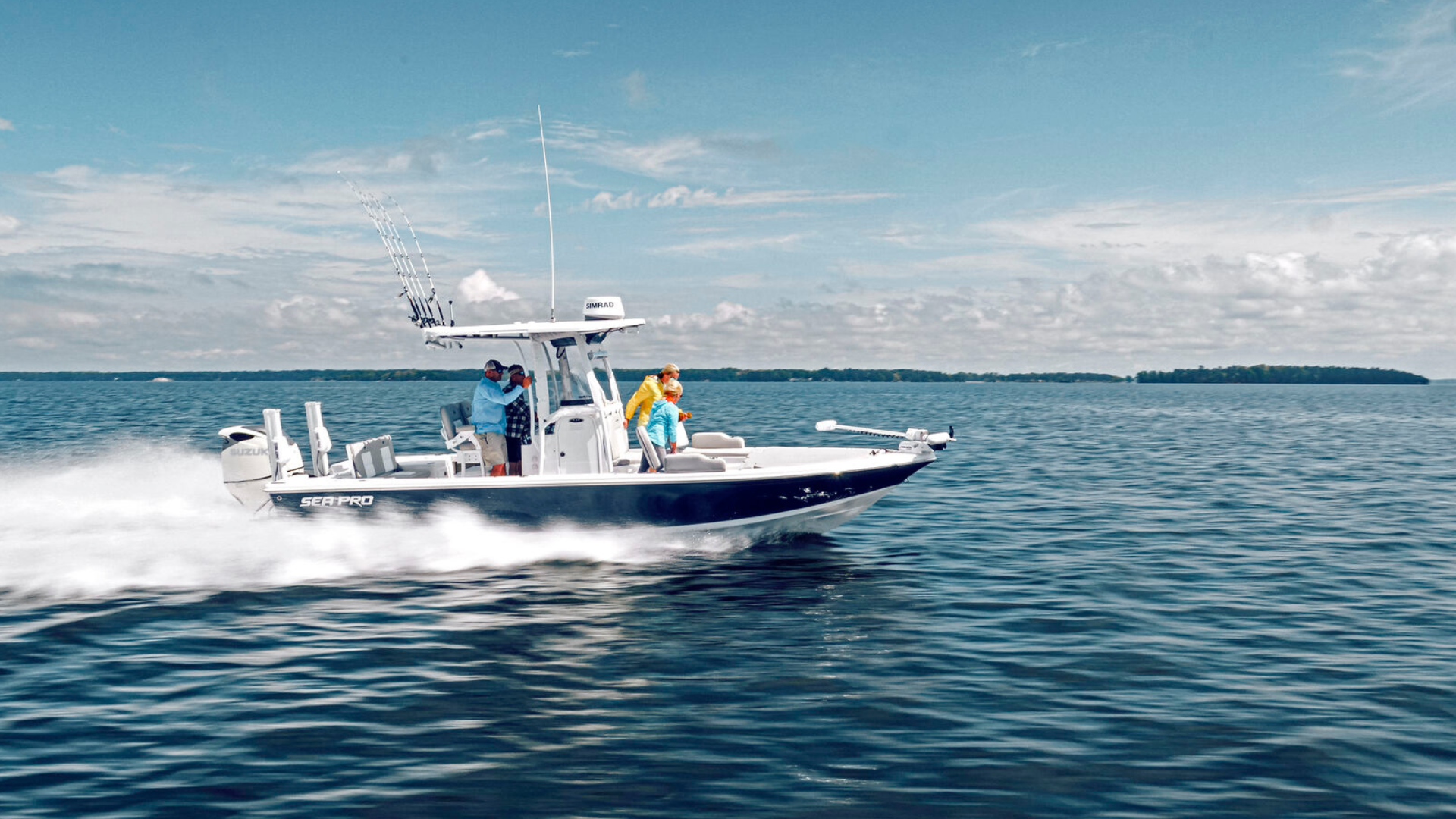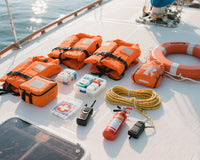Morse / Teleflex
Morse and Teleflex were bought by SeaStar Solutions and their brand names were discontinued, but many products are still available under the SeaStar Brand Name. SeaStar was recently purchased by Dometic. Many boaters need to replace their legacy Teleflex / Morse cables and control parts. Below is a cross-reference guide.
| Original Cable Part Number | SeaStar / Uflex Replacement Part Number |
|---|---|
| Rotary Cables | |
| Morse / Teleflex Steering Cable 304411-000-Length or 312020 URC or SSC 290 Command 290/OEM Cable | M66 – SafeT-Power Assist NFB 4.2 Rotary |
| Morse / Teleflex Steering Cable 304415-000-Length or 304411 TRC | SSC72xx (xx = Cable Length) or SSC61xx (xx = Cable Length) |
| Rack Cables | |
| Morse / Teleflex Steering Cable 300001 or 300620 Command 200/OEM | SSC130xx (xx = Cable Length) Obsolete | Use Uflex M86 |
| Morse / Teleflex Steering Cable 300002 or 300620 Command 200 | SSC130xx (xx = Cable Length) Obsolete | Use Uflex M86 |
| Morse / Teleflex 300619-000-Length or 300620/300619 Command 200/OEM Galv. | SSC130xx (xx = Cable Length) Obsolete | Use Uflex M86 |
| Morse / Teleflex 300620-000-Length or 300620/300619 Command 200 SST | SSC130xx (xx = Cable Length) Obsolete | Use Uflex M86 |
| Morse / Teleflex 300962 Command 250 or 312020 URC | SSX176xx No Assist or SS137xx w/ Power Assist |
| Uflex M47 | M66 |
| Uflex M66 | Safe-T® Quick Connect NFB Helms |
| Teleflex SSC-72 Big-T® & Safe-T® | Teleflex Safe-T Quick Connect NFB Helm SSC-62 |
| Teleflex SC-106 Big-T® & Safe-T® | SS51xx No Power Assist or SS141xx w/ Power Assist (Need SA27620P Converter) |
| Teleflex Safe-T® Quick Connect NFB Helm SSC-61 |
Teleflex Safe-T® Quick Connect NFB Helm SSC-62 |
| Acco 56-8724 or Mercury Ride Guide 309273 Command 290 System | SSC137xx (xx = Cable Length) Safe-T Quick Connect |
| Acco 56-8263 Steermaster Mark III 309273 Command 290 System | SSC137xx (xx = Cable Length) Safe-T Quick Connect |
| Acco 56-8226 or Steermaster Mark III 309273 Command 290 System | SSC137xx (xx = Cable Length) Safe-T Quick Connect |
| DetMar 4-440 Round Rack or Teleflex 309816 Command 200 System | SSC130xx (xx = Cable Length) Obsolete | Use Uflex M86 |
| DetMar 4-200 Square Rack or Teleflex 309816 Command 200 System | SSC130xx (xx = Cable Length) Obsolete | Use Uflex M86 |
| Mercury C-11111 Mercury Ride or Teleflex 309816 Command 200 System | SSC130xx (xx = Cable Length) Obsolete | Use Uflex M86 |
| Mercury C-34451 Mercury Ride Guide or Teleflex 309816 Command 200 System | SSC130xx (xx = Cable Length) Obsolete | Use Uflex M86 |
| Mercury C-76043 Mercury Ride Guide or Teleflex 309816 Command 200 System | SSC130xx (xx = Cable Length) Obsolete | Use Uflex M86 |
| Mercury C-76876 Mercury Ride Guide or Teleflex 309816 Command 200 System | SSC130xx (xx = Cable Length) Obsolete | Use Uflex M86 |
| Mercury C-11110 Mercury Ride Guide or Teleflex 309816 Command 200 System | SSC130xx (xx = Cable Length) Obsolete | Use Uflex M86 |
| OMC 1719 Rack & Pinion or Teleflex 309816 Command 200 System | SSC130xx (xx = Cable Length) Obsolete | Use Uflex M86 |
| OMC 3805/200 OMC Rack & Pinion or Teleflex 309816 Command 200 System | SSC130xx (xx = Cable Length) Obsolete | Use Uflex M86 |
| SeaStar Solutions / Teleflex SSC124xx Rack and Pinion Cable | Uflex Rack and Pinion Steering Cables |
| Complete Rotary Steering System | |
| Morse 309273-000-Length or Command 290 Kit | SSC137xx (xx = Cable Length) Safe-T Quick Connect |
| Morse 311921-000-Length or Command 290 NFB Kit | SSC147xx (xx = Cable Length) NFB 4.2 |
| Complete Rack Steering System | |
| Morse 309816-000-Length or Command 200 Kit | SS141xx (xx = Cable Length) Back Mount Rack or SS151xx NFB Back Mount Rack |
| Morse 308664-000-Length | SSC124xx (xx = Cable Length) | Obsolete Use Uflex M86 |
Archive: Information on Morse Mechanical Steering Systems (Manufacturer)›
The proper steering system is a critical factor in achieving good boat handling performance and safe operation. The combination of engine horsepower, propeller torque, hull design and boat speed exerts varying loads on steering systems. Because the resulting steering forces vary considerably from boat to boat and motor to motor, extreme care must be taken to ensure the steering system you select matches the application.
WARNING
Although Morse Controls designs and manufactures steering systems that meet or exceed industry standards, some high performance boats equipped with high performance accessories can generate steering loads far in excess of 300 lbs at the tiller end. It is mandatory that such boats be water tested to ensure steering loads are within safe limits. Refer to the instruction sheet or contact Morse Controls for more information.

Plan the most direct cable route. Keep bends to a minimum; never bend below the specified radius. Trim settings, mounting position, and adherence to manufacturer specifications all affect loads and handling.

Points to Consider When Selecting a Mechanical Steering System›
- Steering forces increase with speed and horsepower; performance boats can create high shock loads.
- Morse twin cable or hydraulic systems are generally recommended for higher speeds.
- Large outboards may cause veer; ensure sufficient mechanical advantage and smooth cable routing.
- Inspect cables regularly for corrosion or damage; lubricate per engine manufacturer specs.
- Route cables with minimal, gentle bends; avoid excessive length.
- Hydraulic steering is better for high steering loads; mechanical typically up to 35 ft boats with 300 lb tiller load max.
- For boats faster than 50 MPH, consider twin cable or Hynautic hydraulic systems.
- Maximum steering wheel diameter is 16".
- Do not exceed boat’s HP rating.
How To Measure for a Steering Cable Installation›
Plan the straightest possible cable path. Total bends should never exceed 360°, and no bend should be less than the recommended radius. Support long runs every ~6 ft.

Formula: Total = A + B + C
Then adjust: subtract 4" for each 90° bend. For transom/splashwell mount subtract 6". For thru-tube add 6". Round up to the next whole foot.
A = wheel centerline → gunwale
B = dash → transom
C = gunwale → transom/tilt tube centerline
Example: A 20" + B 104" + C 28" = 152"
152" − 8" (two 90° bends) = 144"
+ 6" (thru-tube) = 150" → round up to 156" (13 ft)
Transom/splashwell example: 152" − 8" (bends) = 144"
− 6" (transom mount) = 138" → round up to 144" (12 ft)
How to Identify the Proper Replacement Cable›
Remove the entire cable to measure accurately. Most cables have part number and length stamped on the jacket (often at the engine end). If legible, use the cross-reference guide and order that length.
If the Part Number or Length Can't Be Found

Identify the system type from the drawings, then measure the outer plastic conduit “B” dimension. Add the correct conversion factor for that system, then round as directed.

Example 1: Command 200 cable, B = 122" + 30" conversion = 152" → round up → 156" (13 ft)

Example 2: Teleflex cable, B = 124" + 23" conversion = 147" → round up to next 1/2 ft → 150" (12'6") TRC replacement cable.
Final Thoughts: Ensure Smooth & Safe Steering›
Selecting the correct steering and control cable is essential for handling, maneuverability, and safety. With Morse/Teleflex now under SeaStar (Dometic), use the cross-reference guide and proper measuring to get the right fit. Following best practices for routing, installation, and maintenance will extend system life and improve performance.





